How India engineered its single-day Covid-19 vaccination “record”
The Modi government has claimed the record number of Covid-19 vaccinations on June 21 is a result of the centre taking back charge of vaccine procurement from the states.
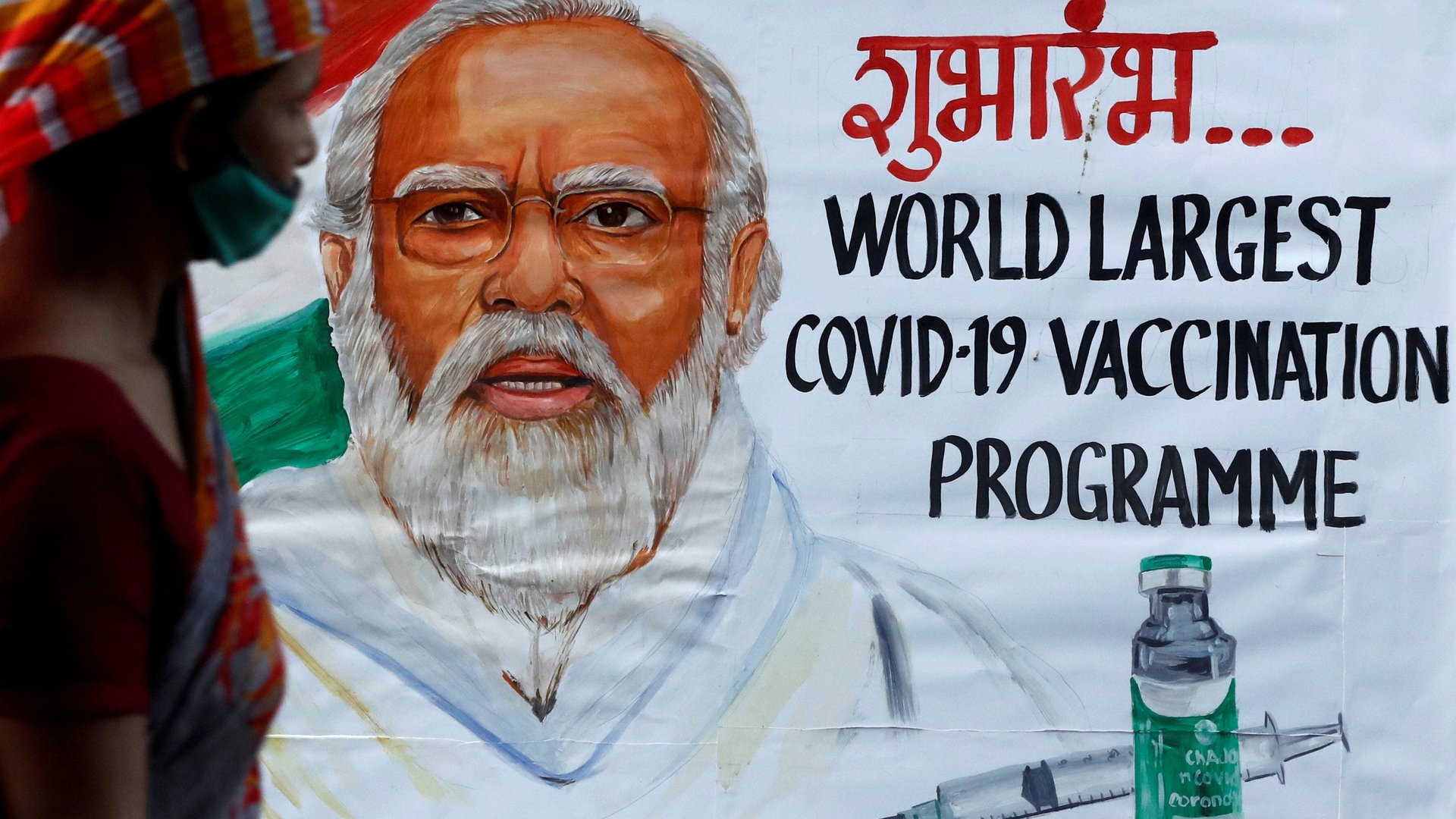

The Modi government has claimed the record number of Covid-19 vaccinations on June 21 is a result of the centre taking back charge of vaccine procurement from the states.
Data, however, suggests that the record of 8.6 million vaccinations was enabled by a slowdown in vaccinations in some Bharatiya Janata Party-ruled states in the run-up to Monday.
Madhya Pradesh saw the highest number of vaccinations across all states with 1.69 million doses administered on Jun 21. The previous day, however, it had delivered just 692 doses of the vaccine, data from the centre’s vaccination platform Cowin shows.
Another factor that seems to have contributed to the spike in vaccinations in the country is the change in central policy that now allows states to administer vaccines that were earlier reserved for those above 45 years of age to even those between 18-44 years.
Health Minister Harsh Vardhan tweeted to say that 8.6 million vaccinations was the “highest ever single day coverage” across the world. However, on June 9, Nature reported that China had vaccinated 20 million people a day for more than a week.
The slowdown in Madhya Pradesh had started from June 17 itself. While 338,847 vaccine doses were delivered on June 16, the next four days showed a steeply declining trend: 124,226 doses on June 17, 14,862 doses on June 18, 22,006 doses on June 19, and just 692 doses of the vaccine on June 20.
The average number of doses delivered per day between June 13-June 16 was 228,784, more than five times the average of 40,446 doses delivered between June 17-June 20.
Had the state maintained the same level of vaccinations as seen on June 16, it would have delivered about 1.35 million doses in four days, or 915,000 doses based on the average between June 13-16, as opposed to the 160,000 doses it actually gave out. The roughly 1.2 million doses saved over four days appear to have contributed to a burst of 1.69 million doses administered on June 21.
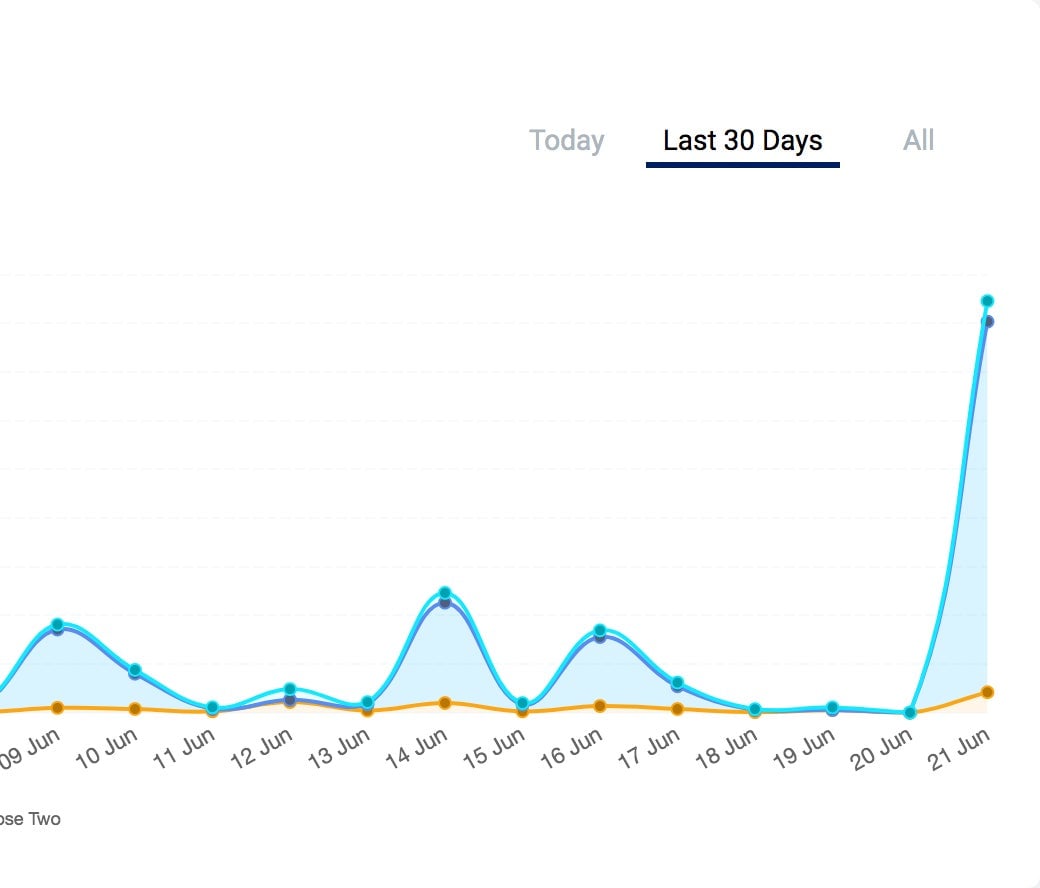
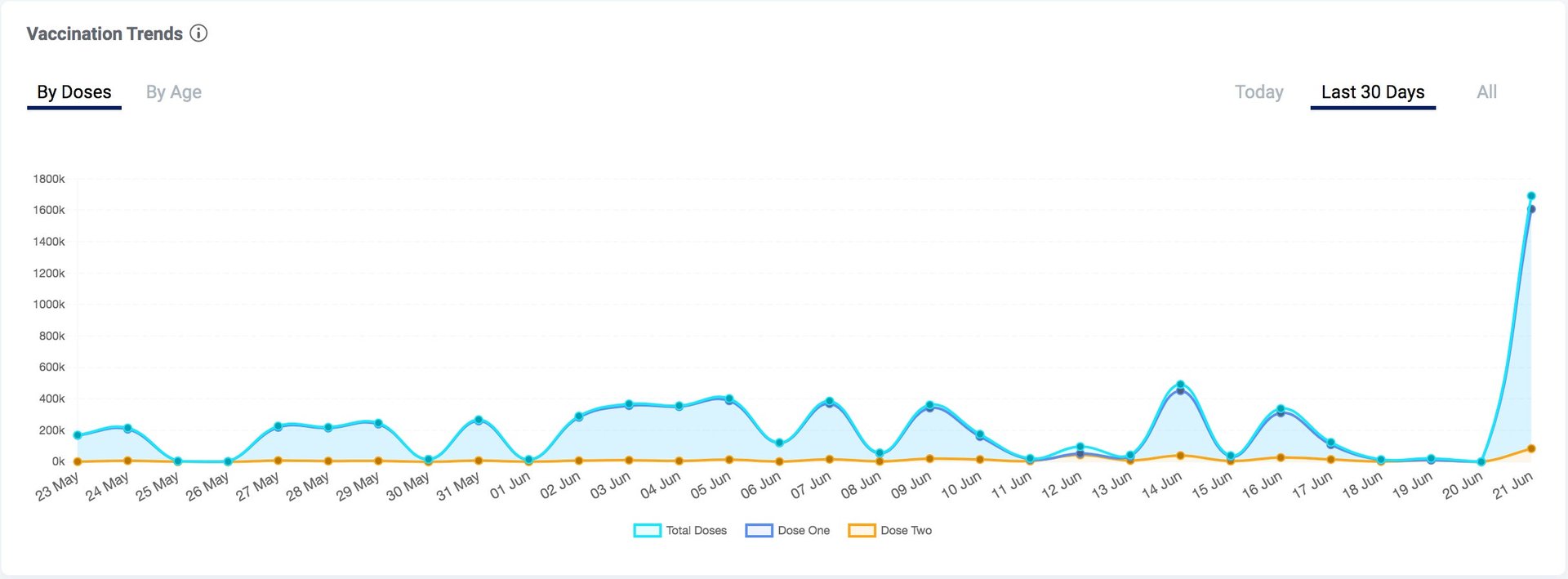
Madhya Pradesh now faces the challenge of maintaining daily vaccinations at the nearly 1.7 million level. Failure to do so would strengthen criticism that its June 21 record was artificially manufactured by holding back vaccines over the previous four days.
Similar trends are visible for some other BJP-ruled states, which saw a drop in vaccinations on June 20.
Karnataka, the state with the second-highest number of vaccinations on June 21, delivered 1.12 million doses in a day. The previous day, June 20, Sunday, it had administered only 68,172 doses. While Sunday usually sees a drop in vaccinations, Karnataka did better on previous Sundays, delivering 126,389 doses on June 6, and 96,956 doses on June 13.
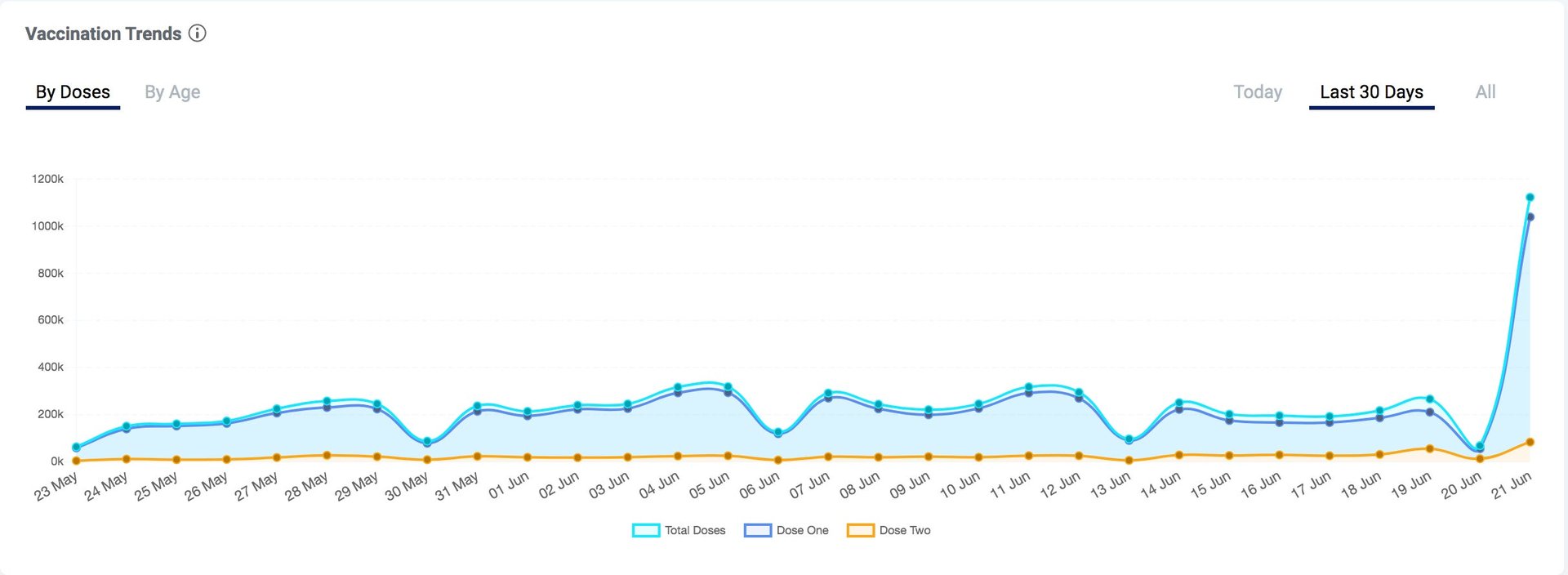
Uttar Pradesh delivered 725,898 vaccine doses on June 21, after a low of 8,800 doses on the previous day—which was 35% lower than the average number of doses administered on the previous two Sundays. Still, the state’s daily vaccinations over the past week were steady, unlike Madhya Pradesh.

The fluctuation in vaccinations was less dramatic in Gujarat, which administered 510,434 vaccine doses on Monday, after 189,953 vaccines on Sunday, the lowest level in 17 days.
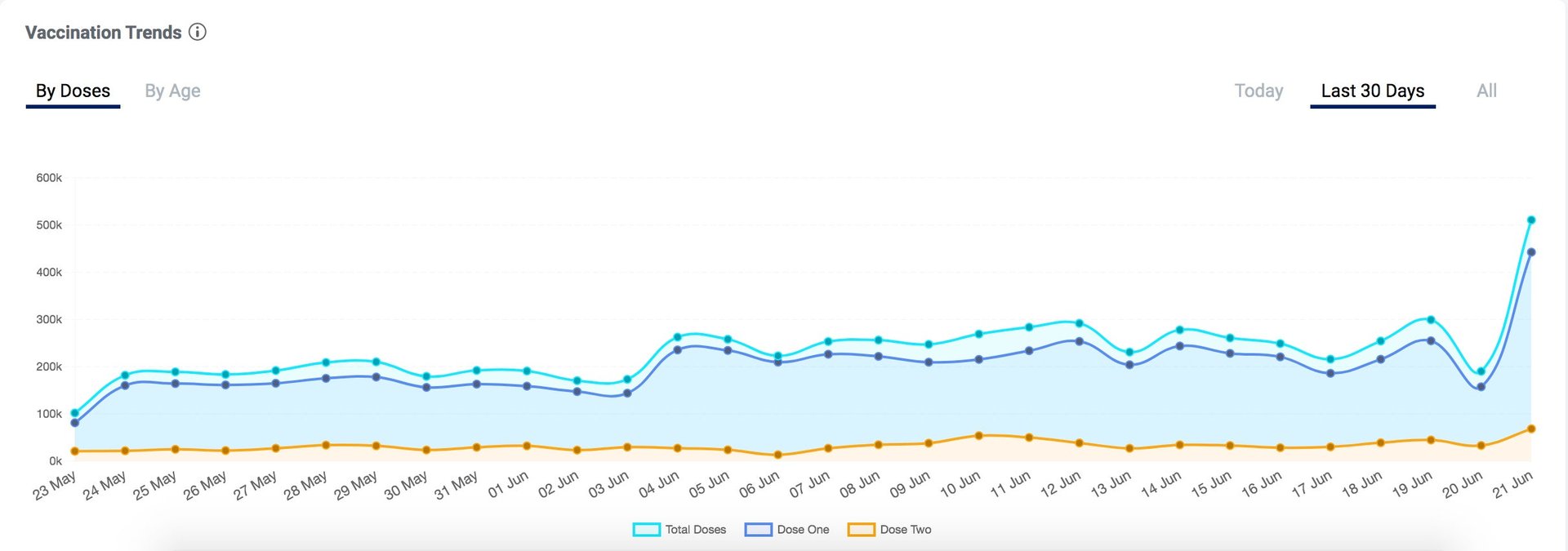
After four days of a rising graph of vaccinations, Assam registered a sharp drop on June 20 (33,654), before seeing a record high on Monday (360,707).
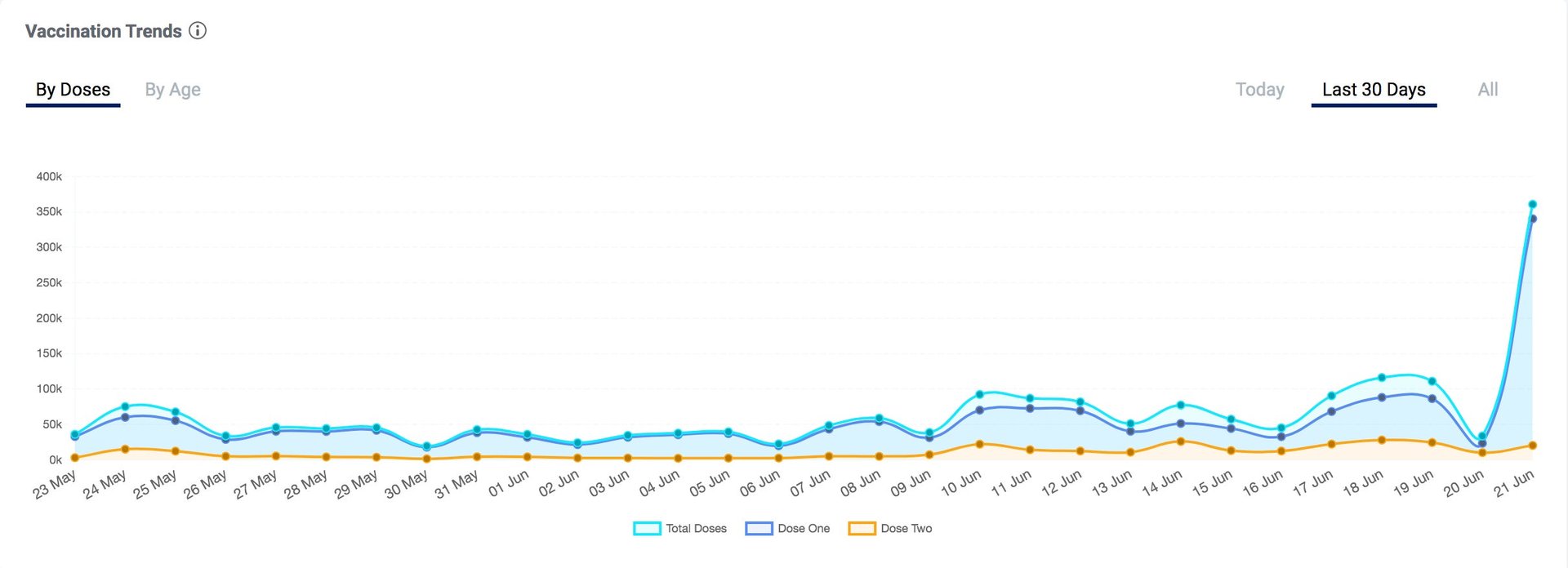
Several large non-BJP states also saw a drop in vaccination levels on June 20, but this was keeping in line with the usual drop seen on Sundays. Nor was the vaccination level on June 21 vastly higher than previous days.
For instance, Maharashtra delivered 383,495 vaccine doses on June 21, not much higher than 381,765 doses given out on June 19. While the state saw a drop on June 20, delivering just 113,109 doses, this was higher than the 87,273 doses administered the previous Sunday.
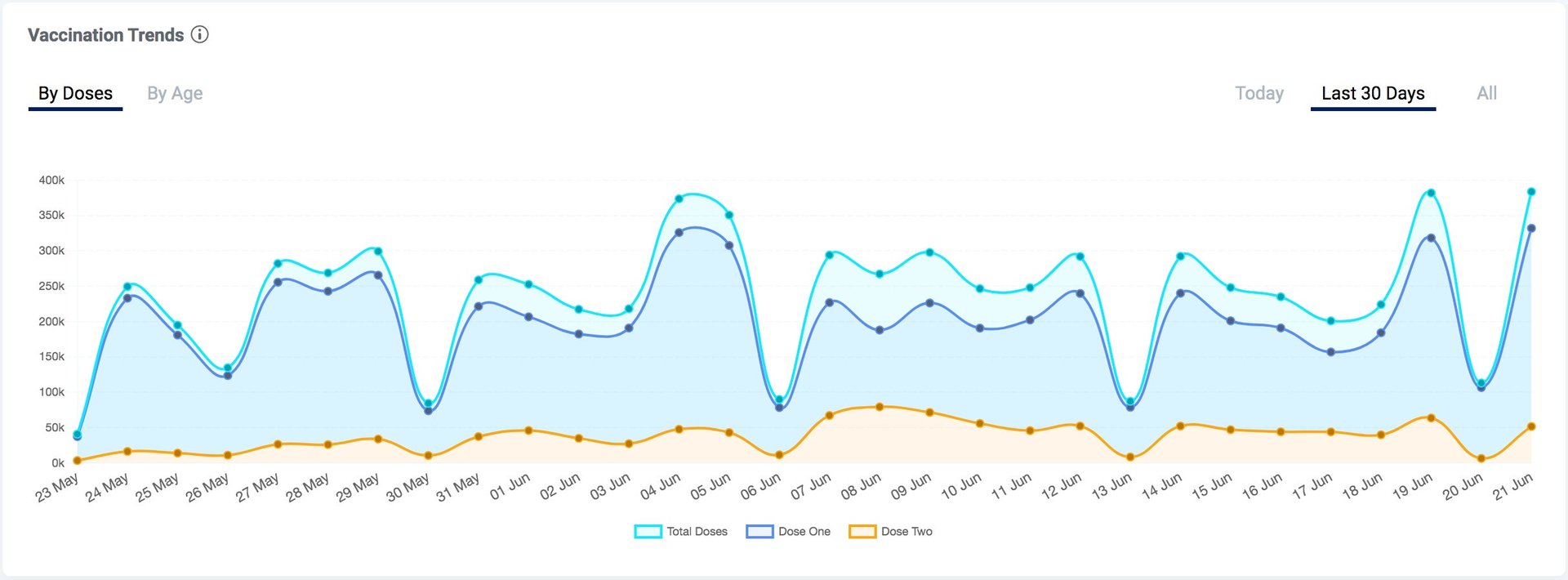
The same was the case with Rajasthan, which delivered 446,000 vaccine doses on June 21, the same as it did on June 11.
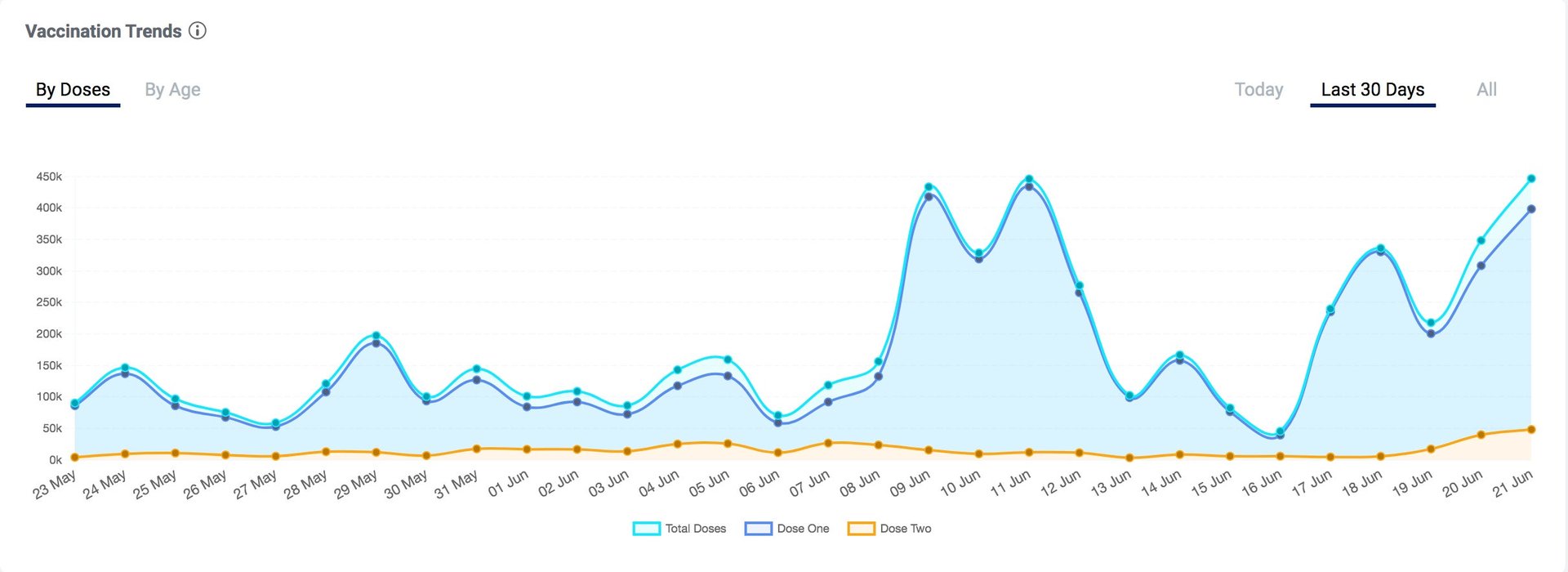
However, Chhattisgarh saw a dramatic rise in vaccinations on Monday, which its health minister TS Singh Deo attributed to a change in policy by the centre that allowed states to use vaccines reserved for those above 45 years for those in 18-44 years age group.
Singh Deo told ANI that the state had 348 days of vaccine stocks for those above 45 years, and just three days of stocks for the 18-44 years age group. “The (previous) policy led to a situation where despite vaccine availability people were not vaccinated,” he said.
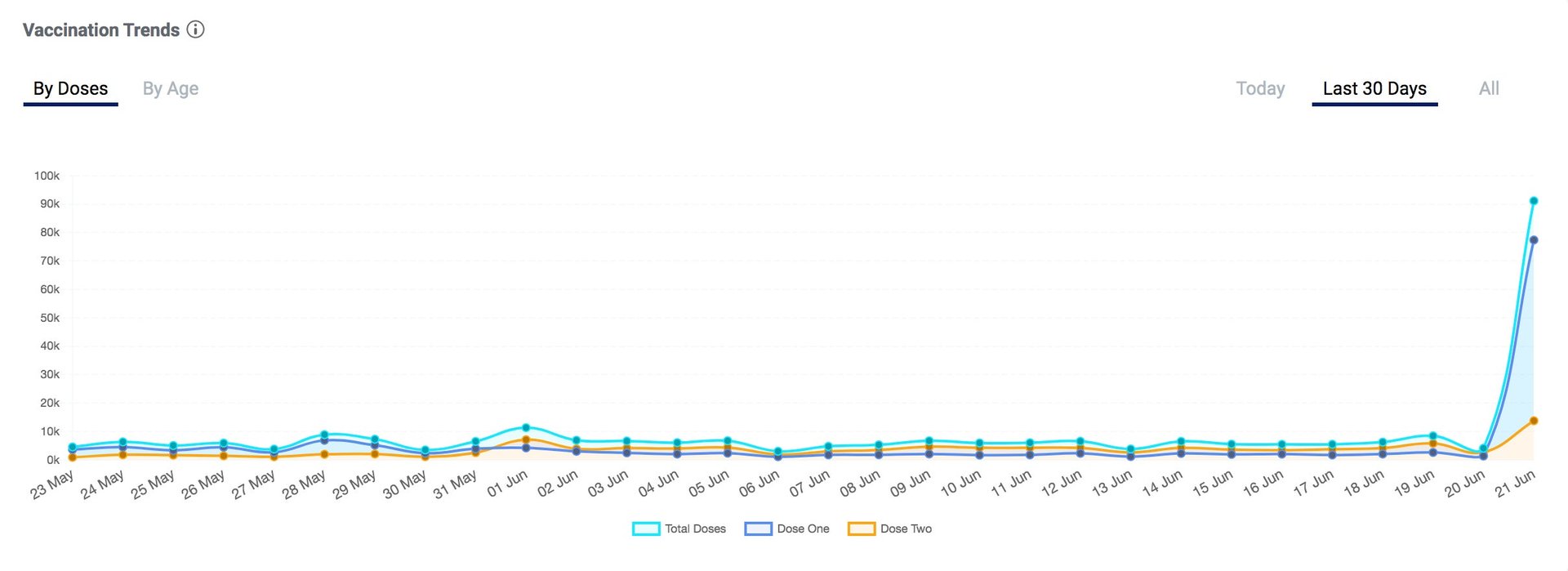
Among all states, Andhra Pradesh’s graph was peculiar: it saw 1.37 million vaccinations on June 20, followed by a sharp drop on June 21.
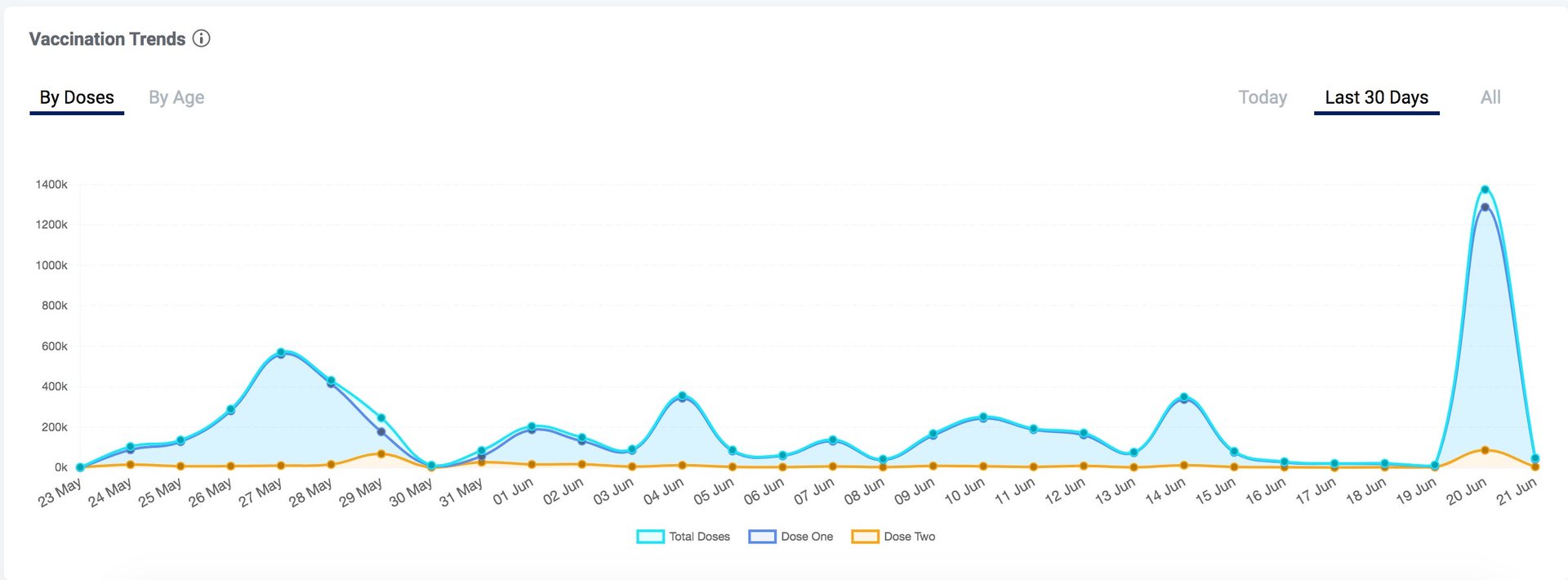
India’s vaccination programme has been plagued with political wrangling between the centre and states. Initially, the centre procured vaccines from the manufacturers directly and supplied them to states. However, with states reporting acute shortages of vaccines during the brutal second wave of Covid-19, the centre changed the procurement policy in April, allowing states to directly purchase vaccines for people aged 18-44 years, even though barring West Bengal, no other state had explicitly asked for such rights. The centre, meanwhile, continued to supply vaccines to states for those above the age of 45.
The change in policy was widely criticised for creating an untenable situation of several states competing to buy vaccines from a small set of approved vaccine makers at a time of global scarcity. Experts argued the centre was better placed to negotiate vaccine purchase. Even the Supreme Court said the policy of the centre providing free vaccines for those above 45 years while abdicating responsibility for younger age groups was “prima facie, arbitrary and irrational.”
On June 7, the centre partially reversed its policy, taking back the responsibility for procuring vaccines for states, announcing that vaccines would now be free for all. However, it continued to allow private entities to buy vaccines directly from manufacturing companies with only the service charge, and not the price of vaccines, capped at Rs150 ($2) for a dose.
This article first appeared on Scroll.in. We welcome your comments at [email protected].